Welcome to the March 2020 edition of the Curious Tea subscription! Here’s a closer look at the four exciting new teas that we are sharing with our subscribers this month.
The first light tea this month is a classic vegetal Fish Hook green tea from Vietnam that comes from the famous Thai Nguyen tea growing area.
The second light tea is a partially shaded Japanese Kabusecha that has a fine balance between savoury umami notes and complex sweetness.
For the dark side of the selection we have a supreme partially oxidised First Flush Darjeeling from Hillton Tea Estate.
Finally, the last tea we are featuring this month is a Japanese Wakocha, a black tea crafted from native tea plants.
- Light: Tan Cuong Fish Hook and Okabe Kabusecha;
- Dark: Darjeeling Hillton First Flush 2019 and Ashikita Zairai Wakocha;
- Mixed: Tan Cuong Fish Hook and Darjeeling Hillton First Flush 2019.
Our Discovery subscription boxes contain 10g taster pouches of all of the above mentioned teas. If you are a subscriber you will benefit from a 10% discount on all teas from our tea shop!
Let’s get into further detail on the products featured in our March tea subscription boxes.
Tan Cuong Fish Hook
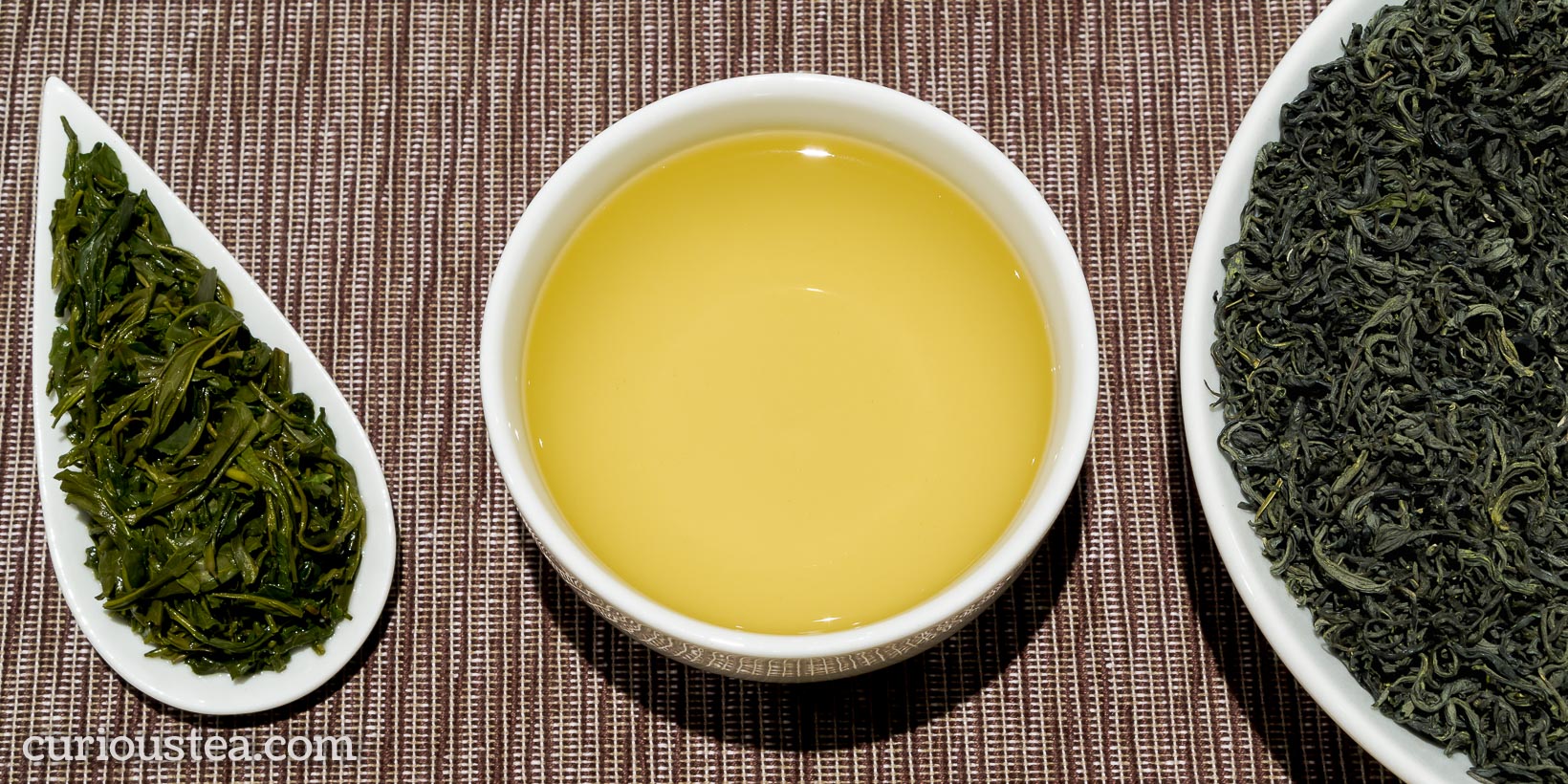
Tan Cuong Fish Hook green tea is a wonderfully bold and distinctive green tea that is grown around the renowned tea growing area of Tân Cương in Thái Nguyên Province of Vietnam. It is grown at an altitude of 500m, by a tea growing community nestled between the Red River delta and the mountainous region to the north. This area boasts a unique micro climate and is highly regarded for the quality of teas produced here that are well-known for their vegetal, yet sweet flavour profiles. This particular batch is from November 2019 harvest.
This tea is produced using traditional hand processing methods from plantation-grown tea trees. It is processed on a small community farm of 10 hectares by Mr Thien with the help from his family. This Vietnamese green tea is made from the small bud and youngest leaf on the tea plant that are hand picked from the plants. The leaves are then hand rolled into the characteristic fish hook shape and processed small batches in wood fired ovens. It is the shape of the dry leaf that gives this tea the ‘Fish Hook’ name.
The tea plants and processing techniques used for producing this tea result in quite a balanced green tea with a nice interplay between greener, savoury, more vegetal notes and a lasting complex sweetness. The traditional processing that utilises wood fired ovens adds more flavour and just a tiny hint of smokiness. This tea represents a more traditional Vietnamese green tea when compared to teas from newer plantations that are mostly producing Taiwanese style floral green oolongs, like our Moc Chau Green Heart Oolong. It is also a lot more approachable than the much more unusual and acquired traditional green teas made from wild assamica plants, like our Muong Khuong Purple Rain.
The dark green leaves of this Tan Cuong Fish Hook green tea produce a light yellow-green liquor with a vegetal and lightly creamy aroma. The vegetal profile is quite bold and complex with mineral, herbaceous and creamy notes of cooked green vegetables such as asparagus and spinach. The aftertaste has a pleasant astringency and light citrus dryness that gives way to a lasting sweetness. There is also just a slight hint of smoke and seaweed on the top of the palate.
We suggest brewing at 80°C for around 2 minutes according to your taste. The leaves of this tea can be brewed multiple times, at least 3 or maybe more depending on the strength of your preferred cup and your brewing methods. If you are finding the flavours too strong you can decrease the brewing time to yield a lighter cup.
You can also buy Tan Cuong Fish Hook green tea in our online shop.
Okabe Kabusecha
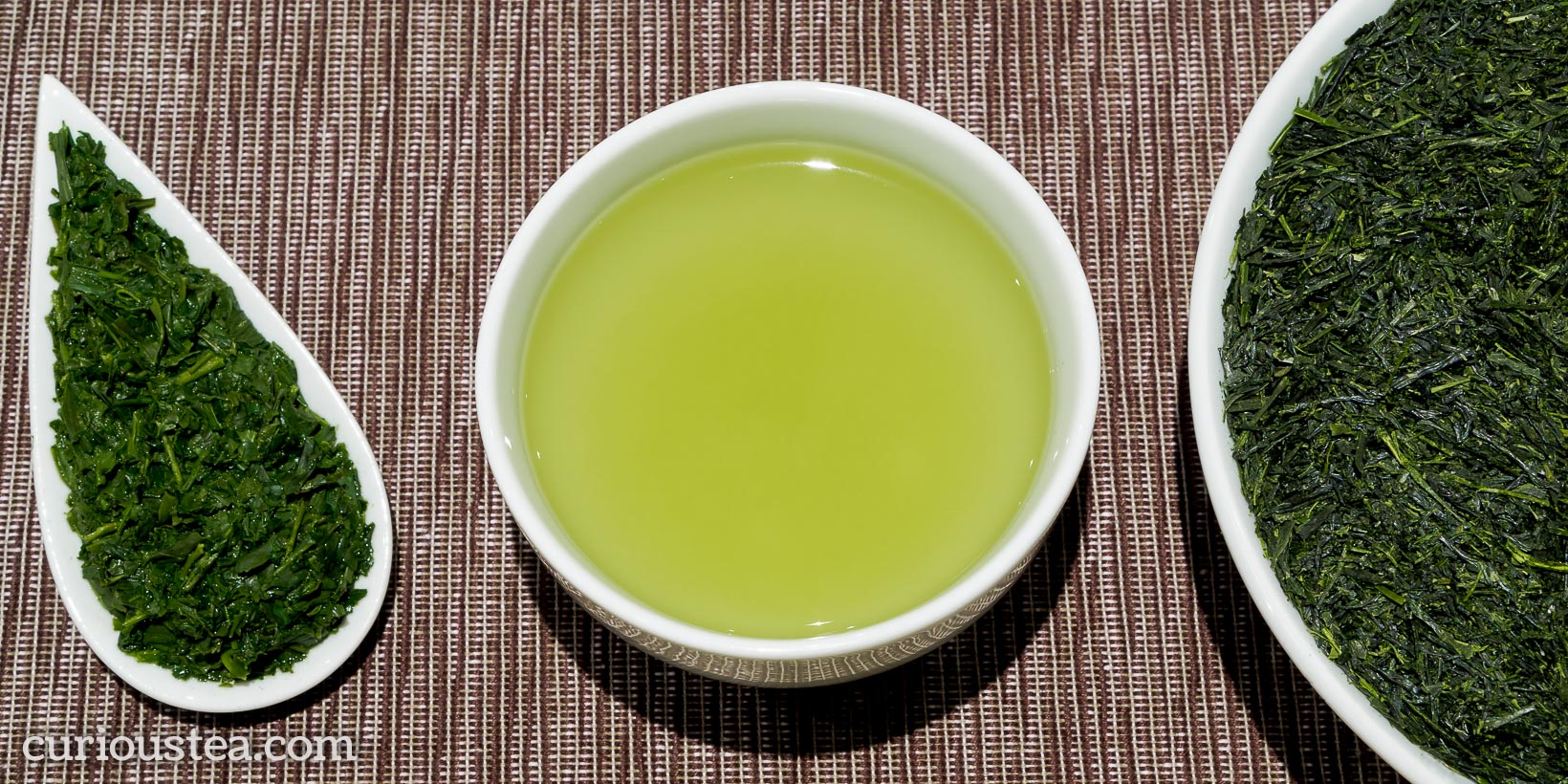
Okabe Kabusecha (岡部かぶせ茶) is a traditional green tea from Japan that is grown at low altitude on the shores of Asahina River in Okabe, Shizuoka Prefecture. Made from the Yabukita (やぶきた) cultivar, it produces a flavoursome yet delicate grassy liquor with a fine balance of sweet verdant and salty umami notes. Kabusecha is a partially shaded tea that is similar to gyokuro and is covered from the sun during growth for around 12 days prior to plucking to concentrate the flavour in the leaves. We source it directly from the grower in Shizuoka and this particular batch was harvested in the first harvest of May 2019.
Okabe Kabusecha green tea undergoes a growing process that is similar to that of gyokuro. For gyokuro tea, the plants are typically shielded from the sun for at least 20 days prior to the harvest that occurs in May of each year. By comparison, kabusecha is covered from the sun for a shorter period of time. The covering of the tea forces the tea plants to slow the rate of photosynthesis, leading to higher levels of theanine. This change in chemistry of the leaves creates a much sweeter, mellower taste with a bolder character that is grassy and rich in umami flavours. The medium length of covering for this Okabe Kabusecha results in a flavour profile that is bolder and more complex than classic sencha but not as rich and savoury when compared to typical gyokuro.
Okabe is a region that is known for growing shaded teas, with Asahina Gyokuro and Asahina Kabusecha being well-known names. The most famous region for gyokuro is without doubt Uji (Kyoto Prefecture), where our classic Uji Gyokuro hails from. Also famous is gyokuro from Yame (Fukuoka Prefecture). Okabe is perhaps less well-known but still is a region with rich history of covered tea production. Okabe was depicted by Utagawa Hiroshige in one of the woodblock prints produced circa 1842 depicting a mountain pass at Okabe and travellers approaching a tea house, the proprietress serving, no doubt, local tea. There is more information on this print available from the Met Museum website.
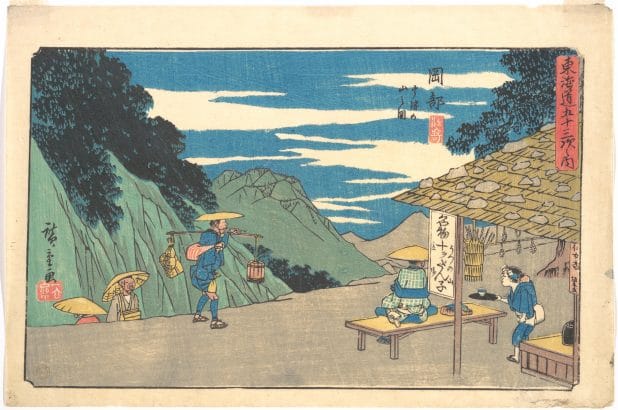
Our Okabe Kabusecha has dark green, very fine leaf that has a sweet, grassy aroma. The liquor produced is opaque, with a rich green colour and an umami, savoury aroma. The flavours are very smooth, with creamy, brassica notes that have a particularly verdant and grassy edge. The clean aftertaste is very smooth, non-astringent and has hints of seaweed and salt water. When brewed Western style, the soft profile is not particularly savoury, yet the typical savoury and umami notes are still present. Brewed in the more traditional Japanese style, the savoury notes are more pronounced but are nicely balanced by complex sweetness of this tea. This tea occupies a niche somewhere between a flavoursome yet lighter taste of sencha and the much more complex profile of gyokuro.
You can brew this tea Western style (2.5g of tea per 200-250ml) at 70°C for about 2 minutes but you will not get the full flavour complexity that is typical of traditional Japanese style of brewing. To get the most when brewing Western style, you should use at least twice the amount of leaves you normally would. That way you are closer to enjoying the authentic flavours. Using this method, brew at 60°C for 1-2 mins in multiple infusions.
But for best and most authentic results we find 10g per 200ml-250ml of water to be the correct amount for this tea. Brew using good quality water that has been heated to 60°C and using traditional Japanese side-handled teaware used for gyokuro that has a fine mesh. As you are using lower temperature water, preheating your teaware prior to brewing is a particularly good idea. In our testing, a first infusion of 90 seconds followed by multiple infusions at around 60 seconds, worked particularly well. As always, keep increasing steeping time until no flavour is left.
You can also buy Okabe Kabusecha green tea in our online shop.
Darjeeling Hillton First Flush 2019
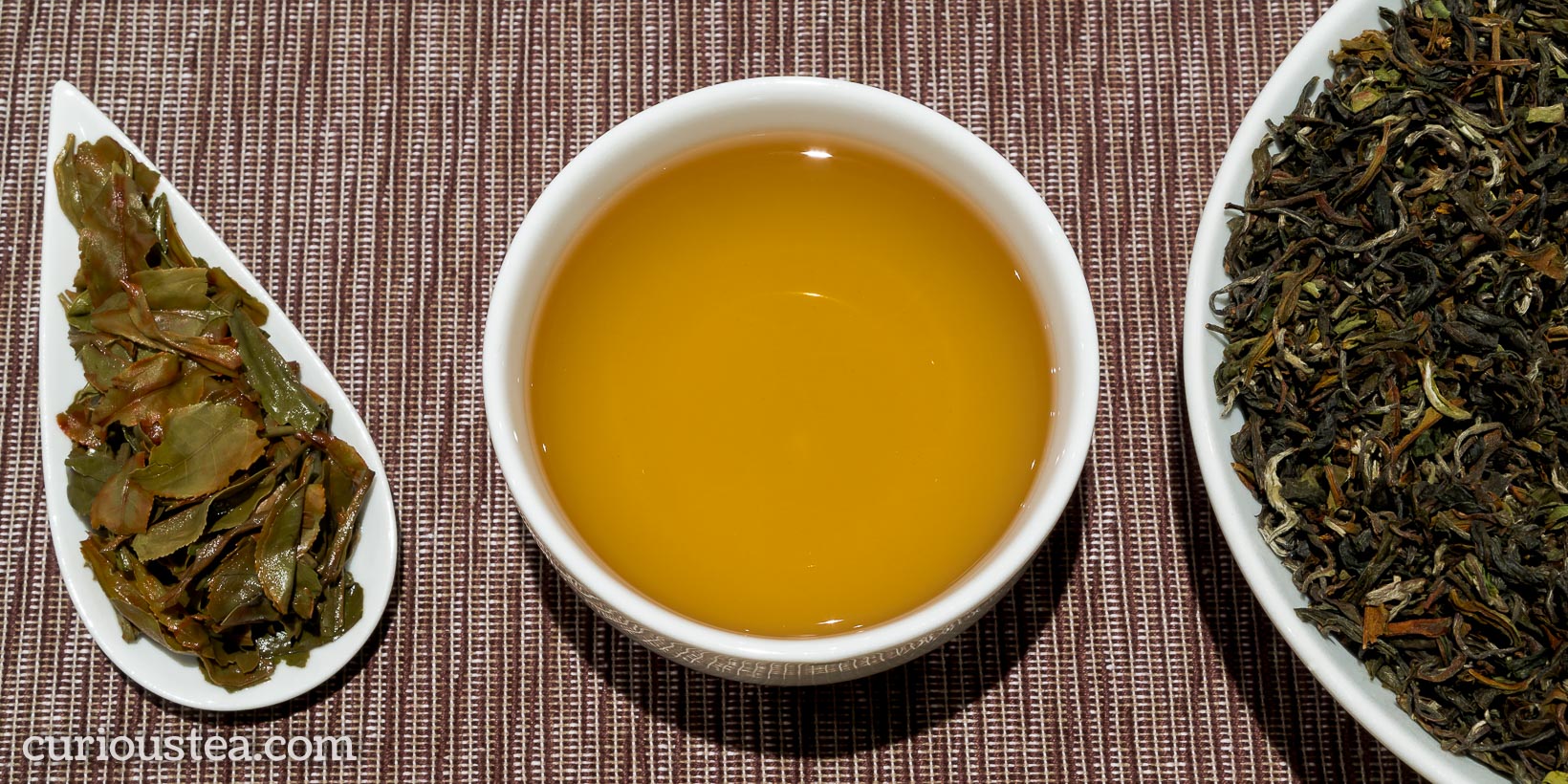
Darjeeling Hillton First Flush is a beautifully floral First Flush tea from Hillton Tea Estate. Carefully processed and oxidised, it produces a flavoursome cup with lowered astringency. The character is not as typical as of other First Flush Darjeeling teas, with minimal mineral and stony flavours. This tea is from March 2019 harvest and we source it via a specialist Darjeeling wholesaler in the UK.
Hillton Tea Estate, also known as Ambiok Tea Garden, is located in Kalimpong sub-division in the northern part of Darjeeling District. The estate is just south of Neora Valley National Park, so it enjoys a favourable environment. While the altitude (700-900m) is somewhat lower when compared to some of the higher gardens, the mountainous landscape of Teesta Valley and slope orientation provides great growing conditions. Together with neighbouring tea gardens of Kumai, Samabeong and Upper Fagu these form outlying Darjeeling estates that are further from the main producing regions. As such, many of the teas that come from these estates have a character that is less typical than most classic Darjeeling teas. These estates are also part of the wider Teesta Valley collection of Darjeeling tea gardens. Hillton (Ambiok) Tea Estate in particular enjoys great reputation for the quality of the orthodox teas produced from the old China bushes growing here.
This Darjeeling Hillton First Flush 2019 has a very neat leaf with a beautiful mixed colour. The brewed semi-oxidised leaves have a neat appearance and give off an aroma of fruits and spices. The liquor is bronze coloured and has a light, verdant aroma. The taste is superbly smooth, with a pronounced perfumed floral profile while being much less astringent compared to typical First Flush Darjeeling teas. This tea is more akin to a medium oxidised oolong, with lightly mineral, fruity and creamy notes. The overall flavours are reminiscent of flower petals to taste – dryly floral, verdant and lightly bittersweet. The aftertaste is little drying but long lasting with a build up of light metallic notes and tanginess. This tea is very delicate and balanced, not extremely typical of First Flush Darjeeling, and is delightful to enjoy in afternoon by itself.
It is best brewed at 90°C for 3 minutes and can be brewed 2+ times.
You can also buy Darjeeling Hillton First Flush 2019 black tea in our online shop.
Ashikita Zairai Wakocha
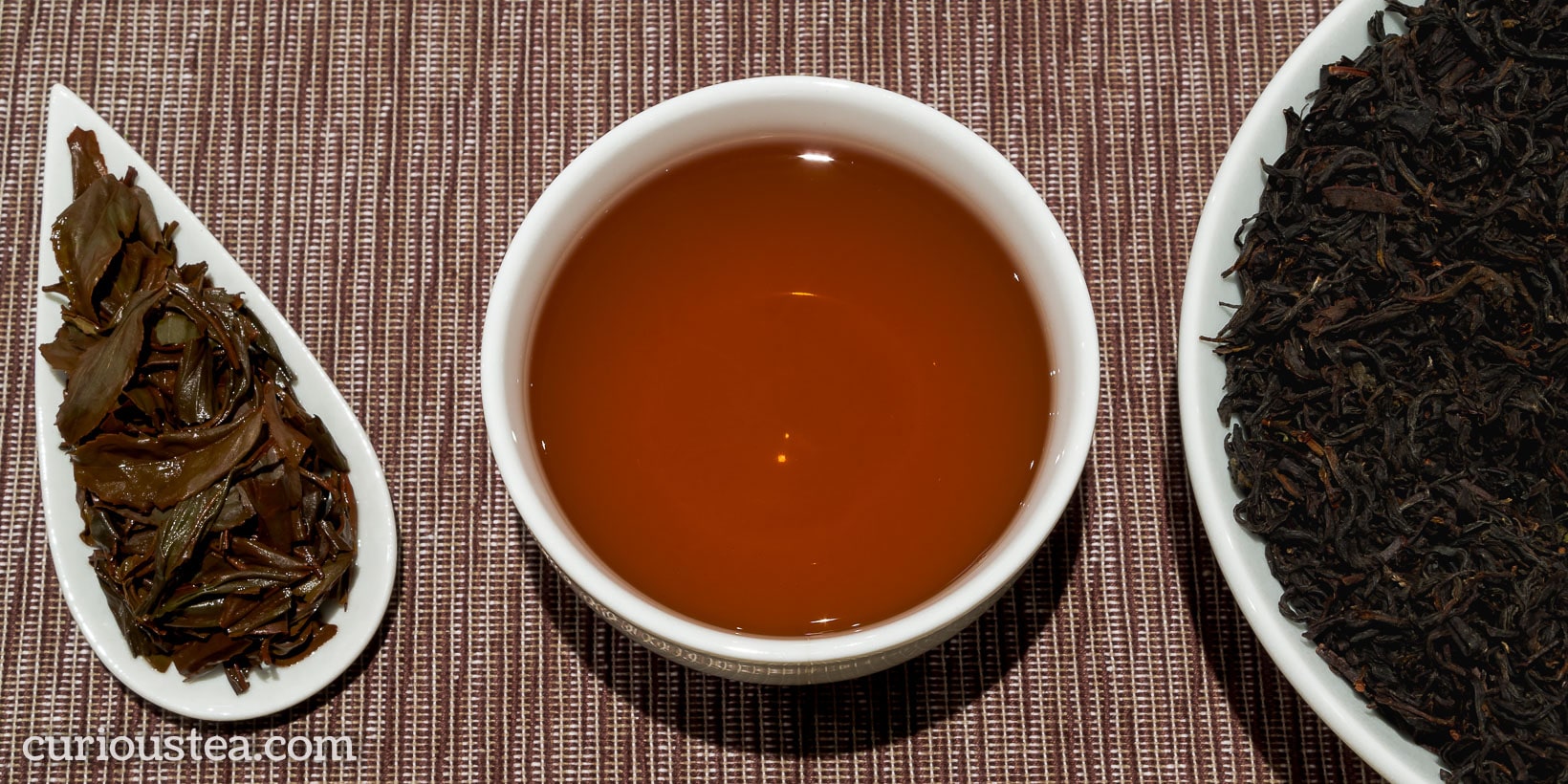
Ashikita Zairai Wakocha (芦北在来和紅茶) is a fruity Japanese black tea crafted from a zairai or ‘native’ cultivar. It is grown on a small family-run farm operating to organic standards in Ashikita District of Kumamoto Prefecture. Here the tea farmer utilises a zairai tea plant to create a unique tea that represents a more heritage style of processing. The current crop on offer is from the second flush harvest picked in June 2019. We source this tea direct from the grower, Mr Toshihiro Kajihara.
This Ashikita Zairai Wakocha black tea is crafted from a zairai (在来), or ‘native’ cultivar. In reality, this term does not refer to a single cultivar in a classic sense. Rather, zairai in Japan refers to any collection of ‘native’ tea plants. Generally these are old tea gardens with plants that pre-exist modern cultivars and have therefore evolved on their own. Most times these plants would also be grown from seeds rather than cuttings, thus greatly diversifying the variety of the plants of the garden. The zairai plants at this tea garden were planted over 60 years ago using seeds from other ‘native’ tea plants.
Generally zairai gardens produce lower yields and are less uniform in output. This is a negative aspect for the farmers as it makes harvesting and processing more costly and complicated while yielding lower returns. It also goes against traditionalist Japanese way of thinking regarding tea processing where uniformity of tea between different years and harvests is key. However zairai gardens are very much part of the Japanese tea heritage and give a fascinating insight into what tea used to be like before modern selection processes and cultivars were introduced.
Wakocha (和紅茶), or Japanese black tea, is still rather rare and sourcing it can be quite complex due to small production levels and mixed results. Different cultivars are utilised for producing different Wakocha black teas with different flavour profiles. For example our Makinohara Benifuki Wakocha has a more broken leaf and a much bolder black tea profile. This Native Wakocha by comparison delivers a much more delicate and complex flavour that results in a beautifully fruity profile that is reminiscent of lighter, fruitier Taiwanese black teas.
This Ashikita Zairai Wakocha black tea consists of neat and even, dark twisted leaves. The liquor produced has a red-bronze colour, with medium clarity and brightness. The aroma from the liquor and the wet leaves is that of sugared plums. The fruity profile has a delicate, light character with notes of red stony fruits and spiced stewed plums. There is pleasant savouriness to the liquor that is finely counterbalanced by subtle sweetness. The lasting aftertaste is clean, with mineral and stony flavours. This is a satisfying and comforting tea that achieves a good balance of flavours and medium complexity.
It is best brewed at 90°C for around 3 minutes, with multiple infusions.
You can buy Ashikita Zairai Wakocha black tea in our online shop. You may also be interested is trying our other teas from Mr Kajihara: Yabukita Kamairicha, Yabukita Wakocha and Zairai Kamairicha.
We really do hope that you enjoy the tea selection for March and are looking forward to the selection in our next box. Our April box will feature a roasted twig tea from Japan, an exquisite high mountain Shan Lin Xi Taiwanese oolong, a Darjeeling from Giddapahar Estate and finally a mini cake dark tea from Tibet.
If reading this has made you curious about our teas, but you don’t yet subscribe to a monthly tea selection, you can sign up for our tea boxes in just a few clicks. We ship worldwide from London, UK.
We always love to hear from you, so if you have any questions, suggestions or just want to chat about tea, email us at contact@curioustea.com, via our Facebook page or via Twitter.
You can also follow us on Instagram for pretty tea photos.
Happy tea discoveries!

